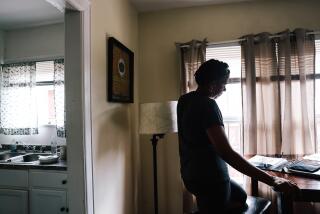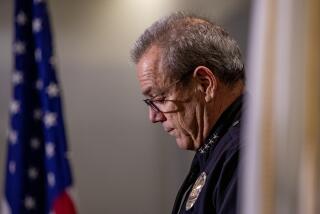Self-Defense Rulings Cited in Fatal Shooting
- Share via
Although he admits he shot and killed a man on Monday, 85-year-old Ferris H. Scott of Santa Ana may not be charged with a crime because--after a preliminary investigation--police say they believe he fired in self-defense.
While the decision now rests with the Orange County district attorney’s office, Scott’s self-defense claim could be bolstered by two court rulings that give California residents broad rights to defend themselves against an attacker.
On Tuesday, police identified the dead man as Donald Eleven Clark, a 26-year-old vagrant who last listed a Tustin address, according to Department of Motor Vehicles records.
Scott told officers that he shot Clark once in the chest with a 20-gauge shotgun when the man lunged at him Monday morning. Scott also told investigators that Clark had repeatedly broken into his trailer and that he was trying to remove Clark when the shooting occurred.
Officers said they are still searching for a Latino woman in her mid-30s who was also in the trailer and apparently witnessed the shooting.
Police confirmed that Scott filed at least four burglary reports between July and August. Prosecutors are expected to begin a review of the case by the end of the week.
“If there is even the slightest possibility that a person is in danger or that they have reason to believe someone is going to attack them, they have the right to react,” said James Enright, chief deputy to Dist. Atty. Cecil Hicks. “Many self-defense cases never get to the jury.”
Enright said that, based on one court decision dating back to the late 1800s, an individual who claims self-defense can stand his ground and fight back, a privilege not enjoyed by residents of many states.
“In the East, there is whole line of cases that say a person has to retreat before he can defend himself,” Enright explained. “But here in California, a person need not retreat and that hasn’t changed for years.”
Attorneys including Enright also said that a 1979 California Supreme Court ruling in People vs. Charles Flannel could be considered in the decision on whether to charge Scott.
Although in most states an individual must prove that he had a reasonable fear of death or serious injury when he killed, in California he must prove only that he thought he was in danger, according to defense lawyer William Kopeny, a former head of writs and appeals for the Orange County public defender’s office.
“The Flannel rule says that you have a right to react if you think you’re in danger, even if you aren’t really,” Kopeny said. “In California, a jury doesn’t get to decide whether your fear is reasonable, while in other states they can.”
Several recent cases have upheld the rights of an individual to defend himself when either he or his home are threatened, according to Melvin Jenson, a supervisor in the homicide division of the district attorney’s office.
In one case last March, an Anaheim man shot a guest at a party at his home, Jenson said. A court found him innocent, however, because it felt that the man had been sufficiently threatened to justify the act.
In another case, Patrick Lavasser of Anaheim was found innocent in May after he shot one of several gang members who had threatened to rush his house several months before, Jenson said. A court found that just the presence of the gangs along with prior threats substantiated Lavasser’s claim of self-defense.
Scott claims that a group of three men including Clark had broken into his house on previous occasions. He says he told police the day before the shooting that he had a gun and planned to use it.
More to Read
Sign up for Essential California
The most important California stories and recommendations in your inbox every morning.
You may occasionally receive promotional content from the Los Angeles Times.













